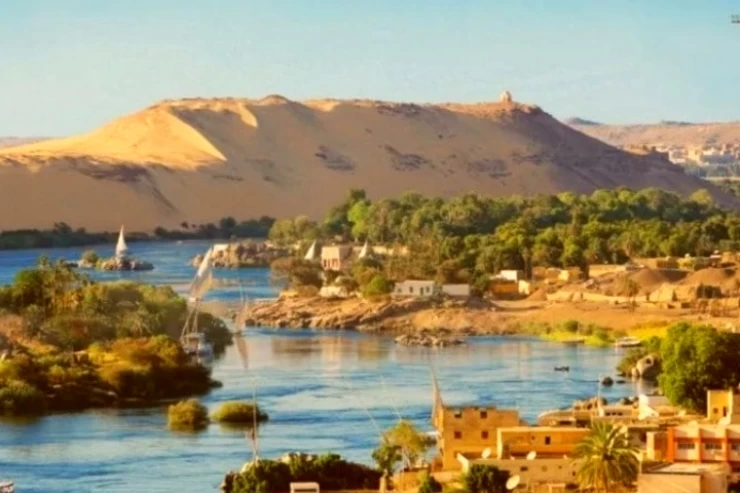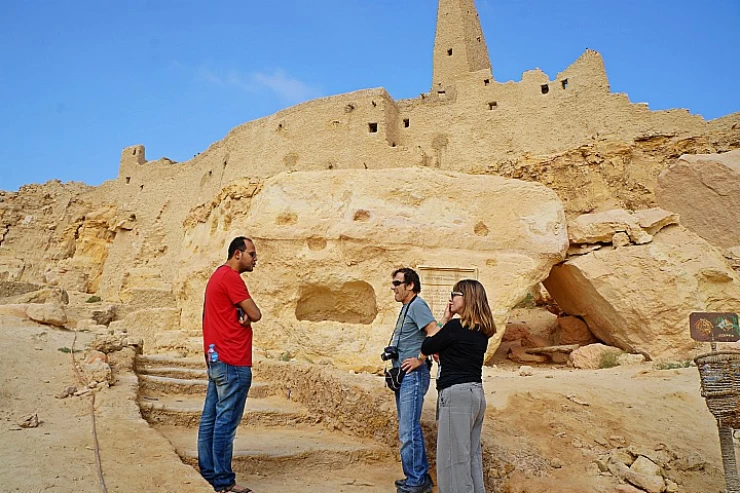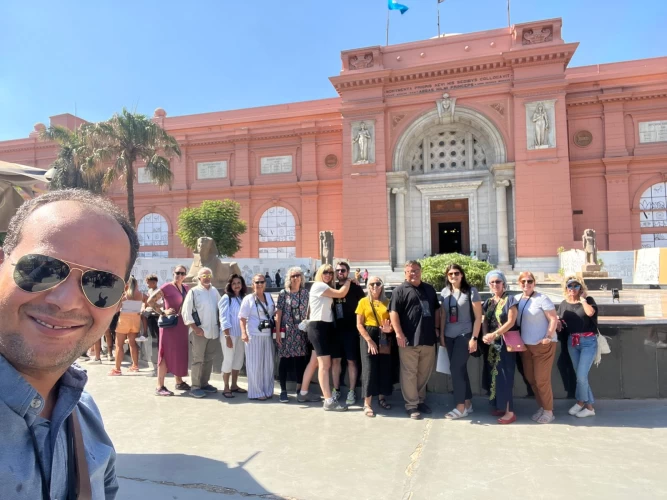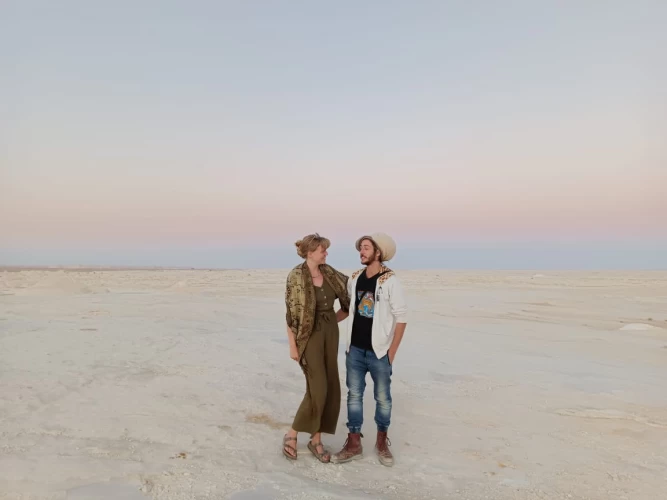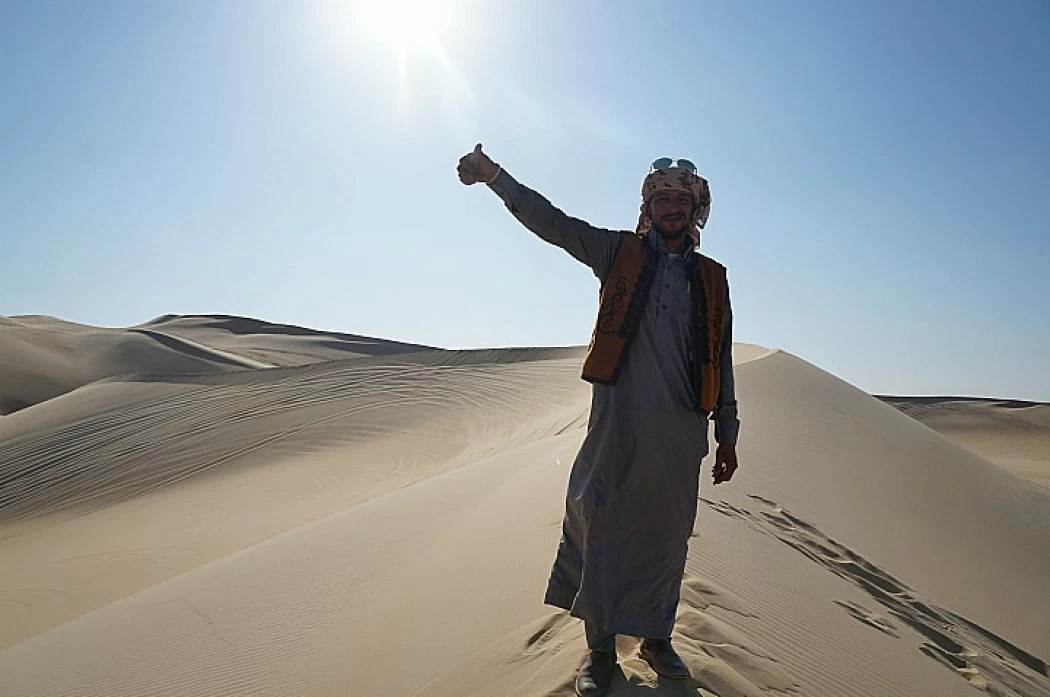
The Great Sand Sea in the Western Desert | Siwa
Great Sand Sea in Egypt
The Great Sand Sea extends approximately 650 km from north to south and 300 km from the east to the west which is recommended for travelers if you explore Siwa Oasis from Cairo.
It is a sandy region, located in North Africa, extends from western Egypt and eastern Libya. 74% of its surface is covered by sand dunes. Oasis, caves, precious stones and dreamlike landscapes make up this extraordinary and little known place. Tourists visit Siwa Oasis to explore the maificent formations and olden sand dunes as well as the historical sites like the Temple of Alexander the Great, the Mountain of the dead and Cleopatra spring. Egypt Western Desert The Egyptian Great sand sea is parallel to the Calanshio sand sea of Libya, with which it borders to the north. The dunes cover approximately 10% of the total area of the western Egyptian desert. This sea of sand was well known to the merchants traveling with caravans through the Sahara. Friedrich Gerhard Rohlfs was the first European to document the Great Sea of Sand. He began his Saharan expeditions in 1865, and named the vast expanse of Grobe Sandmeer dunes, but it was in 1924 with Ahmed Hassanein's maps that Europeans could appreciate the expanse of the sandy sea. The area is remarkable for the presence of quicksand, which is the reason for its existence, because it consists of layers of quicksand over a layer of limestone and over a large amount of groundwater and this is the reason for this large movement and therefore this area has recently been determined to be prohibited to pass through it History Many cases of disappearances in this area are mentioned. However, a tourist movement has emerged in the region in terms of tourists to see the landscape of the region, as well as the practice of sand skiing.
You can explore the Great Sand Sea with Cairo Top Tours through the Trips from Cairo to Siwa Oasis .enjoy the Great Sand Sea Safari to the Desert of Egypt during your amazing Egypt travel packages or during Cairo Day Tours. The Great Sand Sea is approximately 72,000 km². Gerhard Rohlfs the German explorer the first European to enter the Great Sand Sea and the man who named it.
There are many theories about the origins of the unique Great Sand Sea glass you can hear more about them and get the chance to see them when you travel from Cairo to Siwa Oasis. Some think that it is related to radiative melting, or ancient warfare. The glass was first discovered by stone-age Aterian peoples, who made tools from the glass, and later by Egyptians. A polished piece of glass was centered in an elaborate piece of jewelry found in King Tutankhamun’s tomb. Since these times, the glass has remained untouched because of the harshness and inaccessibility of the region.
It has been estimated that the glass of these was formed around 26 million years ago. The scientists believe that the glass is the chemical result of a meteorite colliding with the nearly 100% silica composition of the sand.
The Great Sand Sea extends approximately 650 km from north to south and 300 km from the east to the west which is recommended for travelers if you explore Siwa Oasis from Cairo.
It is a sandy region, located in North Africa, extends from western Egypt and eastern Libya. 74% of its surface is covered by sand dunes. Oasis, caves, precious stones and dreamlike landscapes make up this extraordinary and little known place. Tourists visit Siwa Oasis to explore the maificent formations and olden sand dunes as well as the historical sites like the Temple of Alexander the Great, the Mountain of the dead and Cleopatra spring.
Egypt Western Desert The Egyptian Great sand sea is parallel to the Calanshio sand sea of Libya, with which it borders to the north. The dunes cover approximately 10% of the total area of the western Egyptian desert. This sea of sand was well known to the merchants traveling with caravans through the Sahara.
Friedrich Gerhard Rohlfs was the first European to document the Great Sea of Sand. He began his Saharan expeditions in 1865, and named the vast expanse of Grobe Sandmeer dunes, but it was in 1924 with Ahmed Hassanein's maps that Europeans could appreciate the expanse of the sandy sea. The area is remarkable for the presence of quicksand, which is the reason for its existence, because it consists of layers of quicksand over a layer of limestone and over a large amount of groundwater and this is the reason for this large movement and therefore this area has recently been determined to be prohibited to pass through it History Many cases of disappearances in this area are mentioned. However, a tourist movement has emerged in the region in terms of tourists to see the landscape of the region, as well as the practice of sand skiing.
You can explore the Great Sand Sea with Cairo Top Tours through the Trips from Cairo to Siwa Oasis .enjoy the Great Sand Sea Safari to the Desert of Egypt during your amazing Egypt travel packages or during Cairo Day Tours. The Great Sand Sea is approximately 72,000 km². Gerhard Rohlfs the German explorer the first European to enter the Great Sand Sea and the man who named it.







